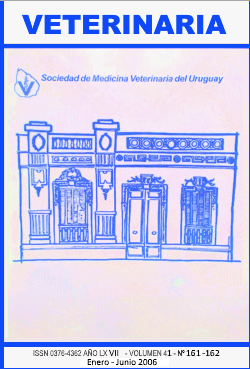Development of molecular techniques for the diagnosis of bacterial bee pathogens
Keywords:
Paenibacillus larvae larvae, Honeybee virus, PCR, RT-PCRAbstract
Apiculture has strongly developed in Uruguay during the recent years. However, the presence of pathogen bacteria such as Paenibacillus larvae larvae and viruses, like Chronic Bee Paralysis Virus (CBPV) and Acute Be Paralysis Virus (ASPV) represents a challenging problem to professionals and bee-keepers. Therefore, the goal of the present work was to perform molecular methods to detect different pathogens that affect honeybees. Bacterial DNA was extracted from different samples including larvae, adult bees and honey, and viral RNA was extracted from adult bees. For the detection of P. l. larvae, a partial region of the 16S rRNA gene and a partial region of the gene that codifies for a metallo-protease were amplified by PCR. Amplification of a region of the CSPV gene that codifies for the viral RNA polymerase and amplification of a partial region of the gene that codifies for an ABPV capsid protein were done by RT-PCR. P. l. larvae was detected in larvae bees and honey while CBPV and ABPV were detected in bees. Successful diagnosis of these bee pathogens from natural samples confirmed that these molecular techniques are fast and sensitive diagnosis tools that can contribute to the control of apiculture-related diseases in Uruguay.











